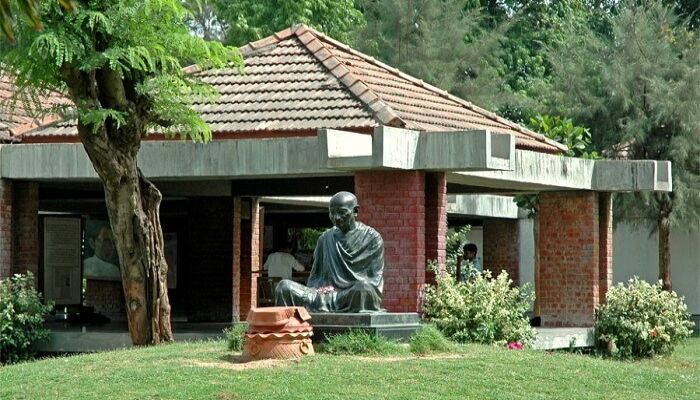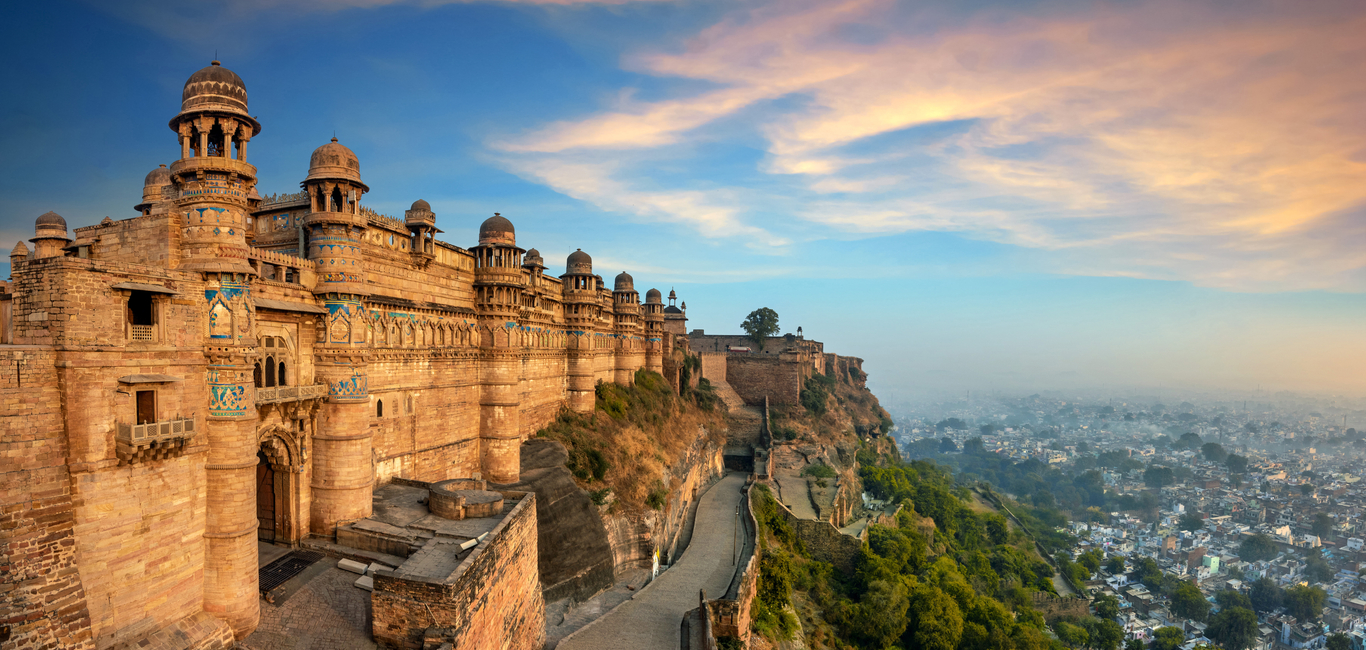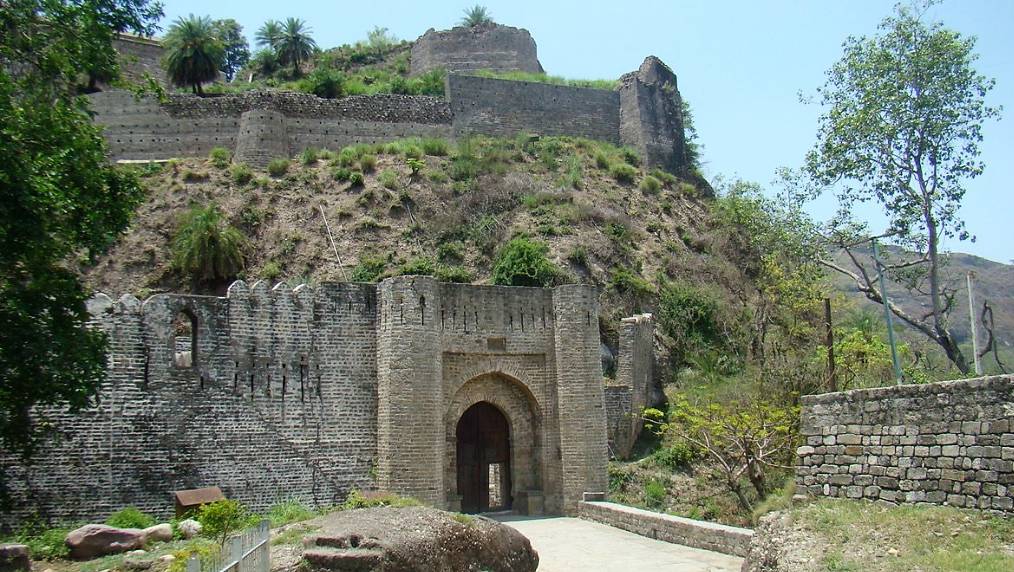
Ahmedabad – The Commercial Hub and cultural nerve center of Gujarat is a fine blend of ancient heritage and vibrant present. Originally, a township named Karnavati was founded by King Karna Solanki in 1063 1093, on the banks of river Sabarmati, the present city was built by Sultan Ahmed Shah in 1411, on the ruins of Karnavati. Sir Thomas Roe, the British envoy to Jehangir’s court was so impressed by the glory of Ahmedabad that he referred to it as “the most handsome town in Hindustan, perhaps in the world”. The city gained an important position in the field of textiles and was referred to as the “Manchester of the East”. Today, this Gateway to Gujarat teems with splendid monuments, mosques, pavilions, and mausoleums.
Shaking Minarets: These two unique minarets at the Siddhi Bashir mosque are the most popular monuments of the city. The three-storeyed minarets are girdled by carved stone balconies and are designed in a way that when one minaret is shaken the other one vibrates too.
Jumma Masjid: This fine mosque set in the heart of the old city was built by Sultan Ahmed Shah in 1423.
Siddi Saiyad Mosque: The beautiful mosque built in Indo- Saracenic Style lies near the Lal Darwaza and is world-renowned for its exquisite stone window tracery.
Rani Sipri’s Mosque: This architectural masterpiece was built in 1514, by Rani Sipri. a queen of Mehmud Begarha.
Rauza of Shah Alam: The exquisite tomb and mosque commemorate a Muslim saint Shah Alam. It was built by AsafKhan, the brother of Mughal Empress Nur Jehan.
Hatheesing Temple: The ornately carved Jain temple dedicated to Lord Dharmnath, the 15th tirthankar was built in 1848, by Shri Kesarisimha Hatheesing Shah. It has 52 small shrines around the spacious courtyard.
Bhadra Fort: The foundation of the fort was laid in 1411. It had royal palaces and gardens and a chamber here was converted into the Bhadra Kali temple by the Marathas.
Gandhi Ashram: It was set up by Gandhiji in 1915, on the banks of river Sabarmati. This humble ashram became the beacon of freedom struggle. Hriday Kunj, the simple cottage of the Mahatama is now a national monument and houses a small Mahatma’s life is held here in the evenings.
Kankaria Lake: The beautiful polygonal lake was built by Sultan Qutb-ud-Din in 1451. The lake has an island garden with a summer palace known as Nagina Wadi.
Calico Textile Museum: This unique museum houses a rich and rare collection of antique textiles from17th century onwards.
Sarkhej Roza: It is about 8 kms. from the city and is known for its elegant architectural complexes. The important buildings are- the tomb of Ahmed Khattu Ganj Baksh, the mosque, the tombs of Mehmud Shah Begada and his queen, and the palace and pavilions, built around the tank of Sarkhej.
Adalaj Vav (19 kms.)
The famous stepwell (vav) located on the outskirts of Adalaj village was built in 1499, by Queen Rudabai. The intricately carved step well is built several stories in-depth and is a unique specimen of architecture.
Gandhinagar (25 kms.)
The capital city of Gujarat is the second planned modern city of India. The State government complex lies at the center around which are thirty self-sufficient sectors. A lot of Space has been provided for parks and gardens, which makes Gandhinagar, the greenest capital of the world.
Akshardham: This architectural wonder of the 20th century is the most famous temple of the Swaminarayan sect, one of the richest religious sects in the world. The temple complex sprawls across an area of 23 acres and the main shrine stands 108 feet tall amidst lush green lawns. About 6,000 tonnes of pink sandstone was used to create this giant edifice and no steel or any other metal was used in the building. The shrine houses a marvelously sculpted 7 ft. high gold-leafed statue of Lord Swami Narayan. There is also an amusement park, a museum, a picture gallery, and a library.
Indroda Park: It covers an area of over 168 hectares across the once barren ravines of the Sabarmati river. There is a deer park, campsite, botanical garden, a walk-in-aviary. whale skeleton enclosure, snake house, crocodile ponds, tortoise and turtle pits, and several other animal enclosures.
Ambaji & Kumbharia (178 kms.)
It is one of the most important pilgrim centers of Gujarat. The famous shrine of Goddess Ambaji, built over Arasur hill is one of the ‘Shakti Peeths’. The famous Kumbharia Jain temples are located nearby. The nearest railhead for Ambaji is Abu Rd. (19 kms.) in Rajasthan.
Lothal (80 kms.)
It was an important port town of the Harappan era, dating back to the 2nd century BC. A well Phannca City was discovered under the mound near Saragwala village in 1954. The mound was called Lothal, which means dead in the local dialect. The presence of a dockyard and terracottas showing an Assyrian and an Egyptian mummy indicates trade Tinks with Mesopotamia (Iraq) and Egypt.
Modhera (102 kms.)
The Sun Temple here is one of the finest monuments of Gujarat and the best example of Solanki temple architecture. The ornately carved temple was built in 1026-27 by Bhimadev I and is dedicated to Lord Surya or Sun God. It was destroyed by Mahmud of Ghazni. Adjacent to the temple is a huge ‘Sun Kund’ (Rama Kund) surrounded by steep- terraces with 108 smaller temples, the nearest railhead is at Mahesana (35 km.).
Patan (125 kms.)
This Jain and Hindu pilgrim center was a great center of art, culture, literature, and education under the Solankis. It is dotted with several Jain and Shaivite shrines. The Shastraling Lake built by King Siddhraj Jaising is surrounded by 1000 Shiva temples. Patan is also renowned as a Patola weaving center.
Taranga Hill (127 kms.)
The Jain pilgrim center amidst the hills of Taranga is known for the temple of Lord Ajitnath, the 22nd Tirthankara. It is also famous for its exceptional scenic surroundings and excellent architecture. Connected by rail and road.
For more information, visit google. Also, have a look at our various monthly issues.



